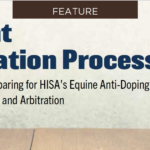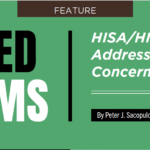St. Augustine, Botulinum Toxins, and The Battle for the Fountain of Youth
Michael J. Sacopulos, JD
Late on Friday, March 9th in his Santa Ana court chambers, United States District Judge Andrew Guilford entered an injunction against Merz Pharmaceuticals. This injunction came 19 months after Allergan initiated litigation against Merz for misappropriation of trade secrets. The high stakes nature of this court battle was reflected in the nearly 300 documents in the courts file. Both companies produce products that reduced wrinkles and catered to the ever growing facial aesthetic market; products that cater to a nation-wide market which generates hundreds of millions of dollars in sale per year.
For some time Allergan has produced and sold Botox Cosmetic, a prescription medicine that is injected into muscles and is used to temporarily improve facial features. Allergan also produces Juvederm, a derma filler that is injected into the skin to correct facial wrinkles and folds. In July 2010, the FDA approved Merz Pharmaceutical product, Xeomin, which could compete with Allergan’s Botox in the facial aesthetic market. Merz began hiring employees in anticipation of selling Xeomin nationwide. So far so good…
Then Merz began hiring Allergan employees. These employees came with extensive knowledge and experience in the sale of Botox Cosmetic product. Unfortunately, they also came with lots of Allergan’s trade secret information,sales lists, strategies, market analysis, competitive analysis… in short Allergan’s play book for the Botox Cosmetic product. Fearful and suspicious of its former employees and Merz, Allergan initiated legal action on August 4th, 2010.
The summer of 2010 saw the onset of corporate schizophrenia at Merz. In a national sales meeting on August 5th, 2010, a Merz lawyer gave all sales representatives a presentation on compliance and confidential information. In this presentation, Merz sales represenatives were told “Merz aesthetic prohibits employees from disclosing confidential/proprietary information of previous employers”. However, only three days prior, a regional sales manager for Merz sent out an email that said “Competitive info- For those of you coming from a competitor or former competitor, please give as much info as you can on KOL’S” (Key Opinion Leaders) sales numbers, office volume, product info etc… (SIC) this will be very valuable for everybody in the region.” The e-mail then noted that all of the recipients had been blind courtesy copied “…so that [they] would remain anonymous and exit [their] current positions without any problem.” This e-mail worked. Eight days later Merz’s regional sales representative received a trove of Allergan documents labeled “For Internal Use Only” and “For Your Information Only. Do Not Duplicate, Detail, Distribute, or Use in Any Promotional Manner.” Merz’s behavior reminds me of Saint Augustine’s quote: “Oh Lord, help me to be pure, but not yet.”
The problem with secrets is once they are known they are no longer secrets. You can’t un-ring the bell. This is the position Judge Guilford found himself in when trying to address Merz’s looting of Allergan’s confidential and propriety information. Judge Guilford entered in an order prohibiting Merz from “providing or selling Xeomin or soliciting purchases of Xeomin in the facial aesthetic market for a period of 10 months from the date of this order.” Further, the order prohibited Merz “from providing or selling Xeomin or soliciting purchases of Xeomin in the therapeutics market for a period of 10 months and the date of this order to Allergan’s customers identified in certain court documents.” Merz is also prohibited from selling Derma filler products or soliciting the purchase of Derma filler products in the facial aesthetic market for a period of 10 months from the date of the order, except in limited circumstances. Finally, Merz has to do a number of internal actions and report on these to the court in six months intervals for the next year in a half.
So where does all of this leave us? We now know not to expect Xeomin for the facial aesthetic market until 2013. Comments from Merz counsel, Rick McKnight, call into question the long term viability of the company. Mr. McKnight told the court a 12 month ban on Xeonim sales would put his client out of business. Judge Guilford’s March 9th, 2012 order will likely not put an end to this litigation. The stakes are simply too high, the facts too messy, for this situation to go quietly into the night.
Finally, the medical community and the general public are the real losers in this battle. An effective medication that has been approved by the FDA and has both aesthetic and therapeutic value will be withheld from the market for many months to come. Physician and patients alike are collateral damage in this story of corporate greed.
Michael J. Sacopulos is a partner with Sacopulos, Johnson & Sacopulos in Terre Haute, Indiana. He also serves as Legal Analyst for Plastic Surgery Practice. His practice focuses on assisting healthcare professionals develop strategies and techniques to avoid medical liability claims. He may be reached at Mike_Sacopulos@Sacopulos.com.





